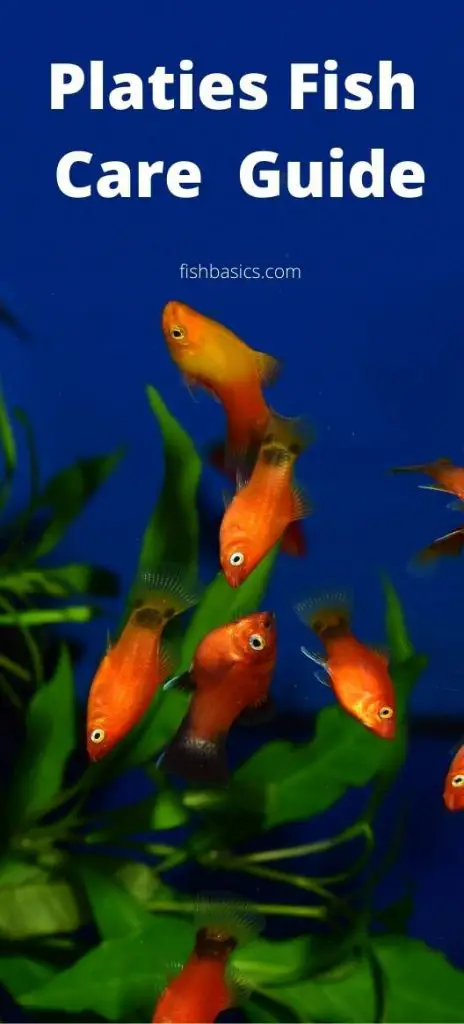Platies fish care does not have to be a daunting task. It is readily available from pet stores around the world and is a moderately popular fish among hobby aquarists.
Platies Fish Care
The platy is a freshwater fish belonging to the Xiphophorus genus, made up of several genera and subgenera. It is indigenous to Central America and Mexico in North America; Oaxaca, Veracruz, Tabasco, and Chiapas in Mexico; Guatemala; El Salvador; Belize; and Honduras.
The platy is closely related to the swordtail, with which it can interbreed to produce fertile offspring.
Platies of various color variations that have been developed by aquarium breeders are the most common pet fish of this variety.
Platies Fish Size and Appearance
The male platy usually grows to an average of 6 centimeters (2.4 in) in length, with a maximum, recorded size of 10 centimeters (3.9 in).
The female is generally smaller, normally reaching 5 centimeters (1.97 in) in length, with a maximum recorded size of 8 centimeters (3.1 in).
The male is more colorful and vibrant, whereas the female is duller in color. These fish are usually found in shoals near the surface of slow-moving water or densely vegetated ponds and streams.
Females lay up to 80 eggs at a time and scatter the eggs around; they prefer to spawn on plants. If they are underfed, however, they may eat their eggs.
Eggs hatch in about 24 hours and become free-swimming after another 3 days. The lifespan of this fish is between two and four years; young fish have a maximum recorded lifespan of 1 year.
Platies Fish Habitat and Range
The platy is a freshwater fish that inhabits various types of ponds, streams, ditches, and slow-moving waters in Central America and Mexico.
These shoaling fish are usually found among thick vegetation or submerged foliage near the surface of the water where they feed on worms, small crustaceans, and insects.
The waters they inhabit are generally soft or moderately hard with a neutral pH of 6.0 to 8.0; the temperature can range from 70°F to 80°F (21°C – 27°C).
Platies Feeding Habits
The platy feeds on worms, small crustaceans, and insects by sifting through the substrate at the bottom of its aquatic habitat.
They are omnivorous; they prefer to eat brine shrimp or bloodworms (live or frozen), but may also eat bottom feeder tablets and flakes.
They mostly forage at the surface of the water, where they can feed on worms, small crustaceans, and insects.
It is suggested that if live food is not available then frozen substitutes should be used. The suggestions for dry foods or frozen foods are both good choices; it is recommended, however, that the owner should use live foods if possible.
If the platy does not have access to any live food, then it can be fed high-quality dry flake foods or bloodworms from a fish food supplier.
Feed three times daily what they will consume within 2 to 3 minutes. When the platy is young it can eat infusoria and newly hatched brine shrimp, as well as finely ground flake food or tablets.
As the fish matures, gradually introduce larger foods like daphnia, bloodworms, or cyclops. These fish should be fed three times a day.
For optimum health, feed your fish a variety of different foods; this reinforces good eating habits and prevents the development of finicky behavior.
Platies Tank/Pond Size
A ten-gallon tank is generally too small for these types of fish. The platy prefers to school, so it is recommended that you keep at least 6 of them in your tank or pond.
A 20 gallon long would be the smallest size tank we recommend for one school of these fish, and a 30+ gallon is best for two schools.
These fish are usually found in shoals near the surface of slow-moving water or densely vegetated ponds and streams.
If you are keeping multiple Platies in a smaller tank, it is important that you maintain open space for swimming and well as plenty of plants for them to play around with.
They can be housed with most other freshwater tropical fish; however, there are some exceptions due to their active nature.
In an aquarium environment, they should be kept with other livebearers because they have similar requirements and will not pose a threat to each other.
In an outdoor pond, it is important that you choose compatible fish by researching the types of fish that are indigenous to your area; this way you can ensure that the water temperature in your pond will match up with what is best for the fish you have chosen.
Platies Fish Care Tips
Platies make beautiful pet fish that are always a great addition to any pond or aquarium. If you have the resources, get some platies and you will love having them around. Follow fishbasics Pinterest for more tips.









